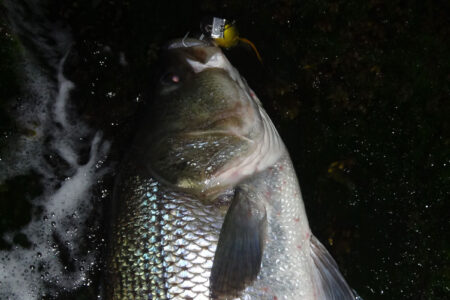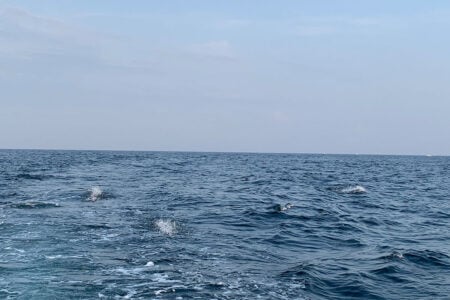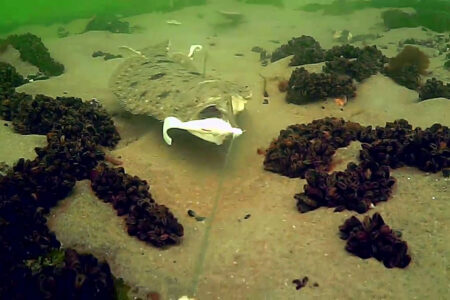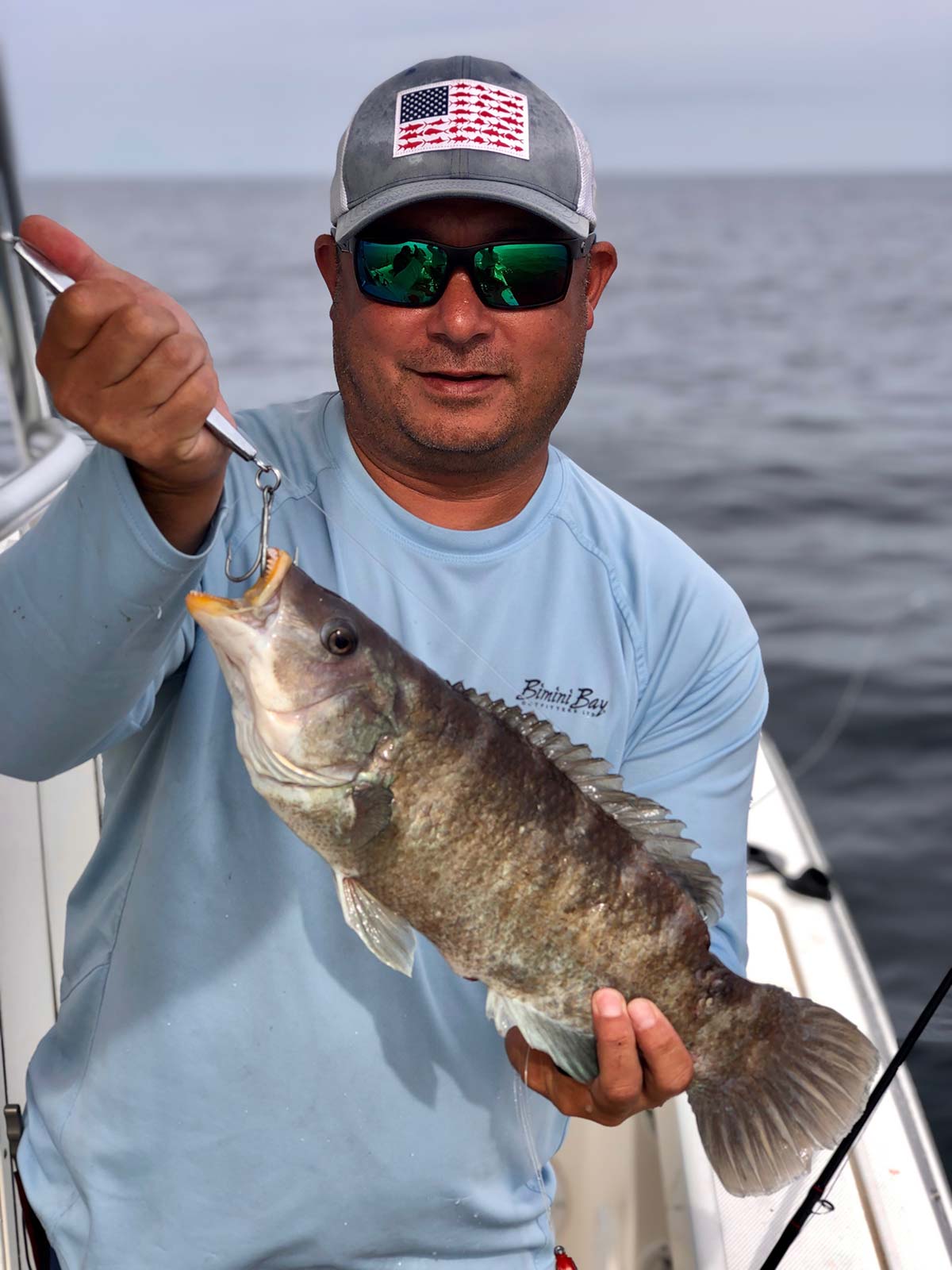
Five species that most anglers don’t realize are a ton of fun to catch!
I have always rooted for the underdog, the one that has to fight for respect so maybe that explains my love of New England’s lesser sought-after bottom fish. They may not have seven stripes on their sides or be able to change colors like a fluke or possess inset fins and sleek bodies like members of the tuna family, but these fish hold a special place in my angling heart.
Choggies
Also known as cunner or bergal, choggies are often considered trash fish, but they’re actually fun to catch, especially the big ones! I thought I had landed the choggie of the century when I caught my personal best at 2.4 pounds last summer, but then my friend and fellow RISAA member, Chris Clark crushed my personal record with a colossal 3-pounder. I’m pretty sure he thought it was a tog when he hooked it and was stunned when he saw it was a choggie. It certainly fought hard enough to be one!
Just where is this choggie hotspot? That secret will remain with Gary Zera who hosted the trip. But even without targeting them, most bottom fishermen hook at least a few choggies each season, often on a crab intended for tog but if you fish for them intentionally you will find that the large ones are absolute suckers for long, thin vertical jigs. I can’t explain their love for long thin metals, as often the jig is often about as long as they are! But what they lack in smarts but they make up for it in moxie and will often hit the jig repeatedly until they hook themselves. I have had similar experience in Narragansett Bay as well so it’s not only out front on the tog or cod grounds.
My technique is to drop a narrow silver metal such as a point Jude Joe Po-Jee or even a Diamond Jig (hint swap out the single hooks for a treble). Usually a 3/0 or 2/0 works well. The techniques is to be less aggressive than most jigging you would do. Use more of a wiggle or light jiggle along the bottom with a rod that’s fairly soft especially at the tip and let them bang away as you drift over broken bottom. I usually fish for large choggies pretty deep. At least 40 feet and often 60 or more. A good time to do this is during the end of a tide and change over. Once the tide is cranking a bit I usually fish for something else.
Certainly wrecks are good choices, both in the bay and out front, along with most of the usual tog habitat but I tend to fish deeper for the choggies than I do for tog. Bait certainly works but you will get many more small ones and those aren’t the ones you’re after. Those weighing a pound or more are the targets so hit em with the jig!
Northern Puffers
How can you not smile when you catch a northern puffer? Seriously rub its belly watch it puff up in your hand and just try not to smile. If there are any kids nearby (or adults that have been told they act like kids), its game over! Smiles everywhere. Further proof that fishing is supposed to be fun.
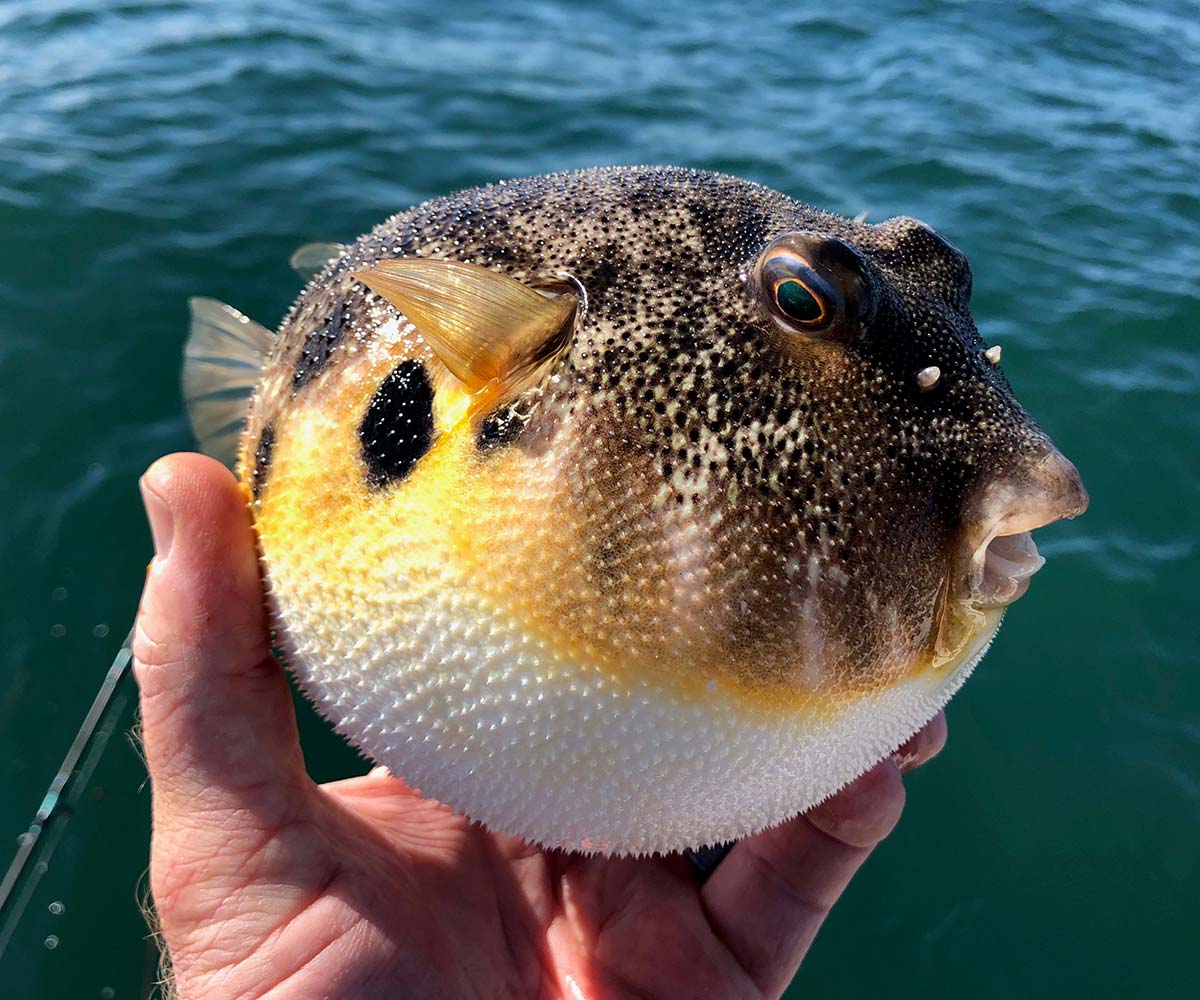
l really enjoy the puffer experience for what it is, just fun; but yes you can certainly eat them; just be sure it’s a northern puffer and not a smooth puffer, those are poisonous to the touch! The tail section of a northern puffer butterflies like a large shrimp when fried if you keep the tail attached when cleaning. But I pretty much always let them go.
Puffers have small mouths so you’ll need small hooks to catch them, the same hooks you use for scup are perfect, sizes 4 and 2. They love sandworms, shrimp and Gulp, but they aren’t too picky, I’ve caught them on squid, sea clam and even small lures. A slow retrieve is the only other hard and fast rule; because puffers aren’t exactly speed demons. Shore fishing near Rocky Point State Park and Colt State Park pier can be good Puffer zones. Most of the shallow bays hold some as do the shallow rock piles in August.
Red Hake
Otherwise known as ling, red hake, are another undepreciated fish that swims in our waters. Reddish brown on top and yellow or white on bottom with a pair of long thin barbells under their chin, catching one is often quickly followed by the question, “what the heck is that thing!?” But surprisingly, this rubbery, and a bit slimy, fish is actually pretty tasty and a welcome addition to the cooler that rarely gets the recognition that they deserve.
Smaller than cod and haddock and even a bit less aggressive, they are quite abundant in New England and can make for a tasty catch when other species don’t cooperate. These fish tend to like lesser-fished areas such as offshore mud flats, and broken mixed bottoms, humps or holes. Offshore the area known as “The Mud Hole” is often loaded with them, but you certainly don’t have to travel that far to get them. Just about any offshore area with a muddy bottom will have them and they will congregate around wrecks as well.
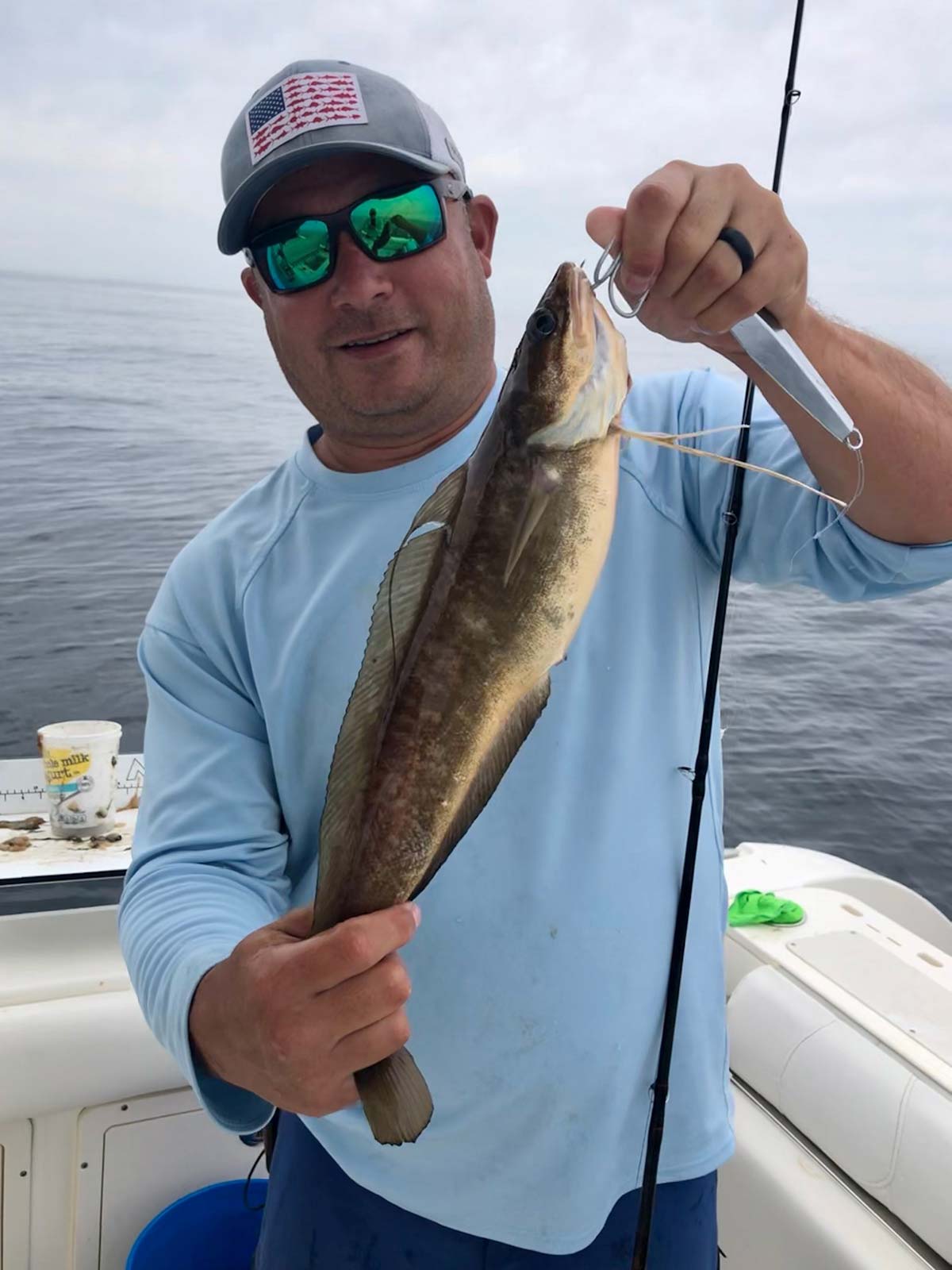
You can target them in much the same way that you would haddock. If you’re going to fish with bait, keep the hooks and the baits small—clams or strips of squid. You can also get them with a jig and teaser, just don’t expect too much action on the jig, although some of the largest ones are caught on jigs. Soft rods are helpful, especially if you wish to have fun, as a cod rod will overpower these guys pretty fast.
The typical ling rig is 6 to 10 ounces of lead anchoring a hi-lo rig baited with either clam or squid and a few beads or mini squid skirts. You can drift if the current is soft, otherwise anchor. Don’t be surprised if you catch a few cousins of the red hake, the spotted hake as well; a smaller version with, you guessed it, spots. I’ve even pulled a few spotted hake out of some of the deeper spots inside Narragansett Bay.
Red hake are pretty active at night as well so if for some reason you are already spending the night near an offshore wreck you can catch quite a few once night falls. Their meat is white and sweet, less flakey than haddock and it is very good when fresh, and holds up decent but not great once frozen. The flavor stays fine but the texture can deteriorate a bit. Ling have rubbery skin so no scaling needed, most anglers fillet them.
Sea Robins
You can’t talk undepreciated fish and not talk about sea robins. Few fish in the Northeast look as strange as they do, with birdlike feet appendages on their underside to grip rocks, large expandable “wings” to glide with and an audible croaking sound when you rub their belly. (Who doesn’t do that!?) Sea robins are a kid’s delight and they taste a lot better than most folks realize. A popular choice in Italy and France as the fish in bouillabaisse soup, our region is just beginning to appreciate them. New England actually has two species, the more common and larger striped sea robin (with a brown/orange coloration and a bright white belly) and the smaller, less colorful northern sea robin. Sea Robins can range from under a pound to over 3 pounds.
The fight is briefly spirited and then tends to fall off but with those large wings opened up, in a bit of current they can make you work to get them in the boat. Unhooking a Sea robin can be a bit of a challenge as they are awkward to hold and while they are no threat to bite you…they possess very sharp gill plates and you can get give you a pretty good cut in the blink of an eye if you try to hold them behind the head. So a wet cloth or a gripper of some sort will afford safer handling and faster unhooking.
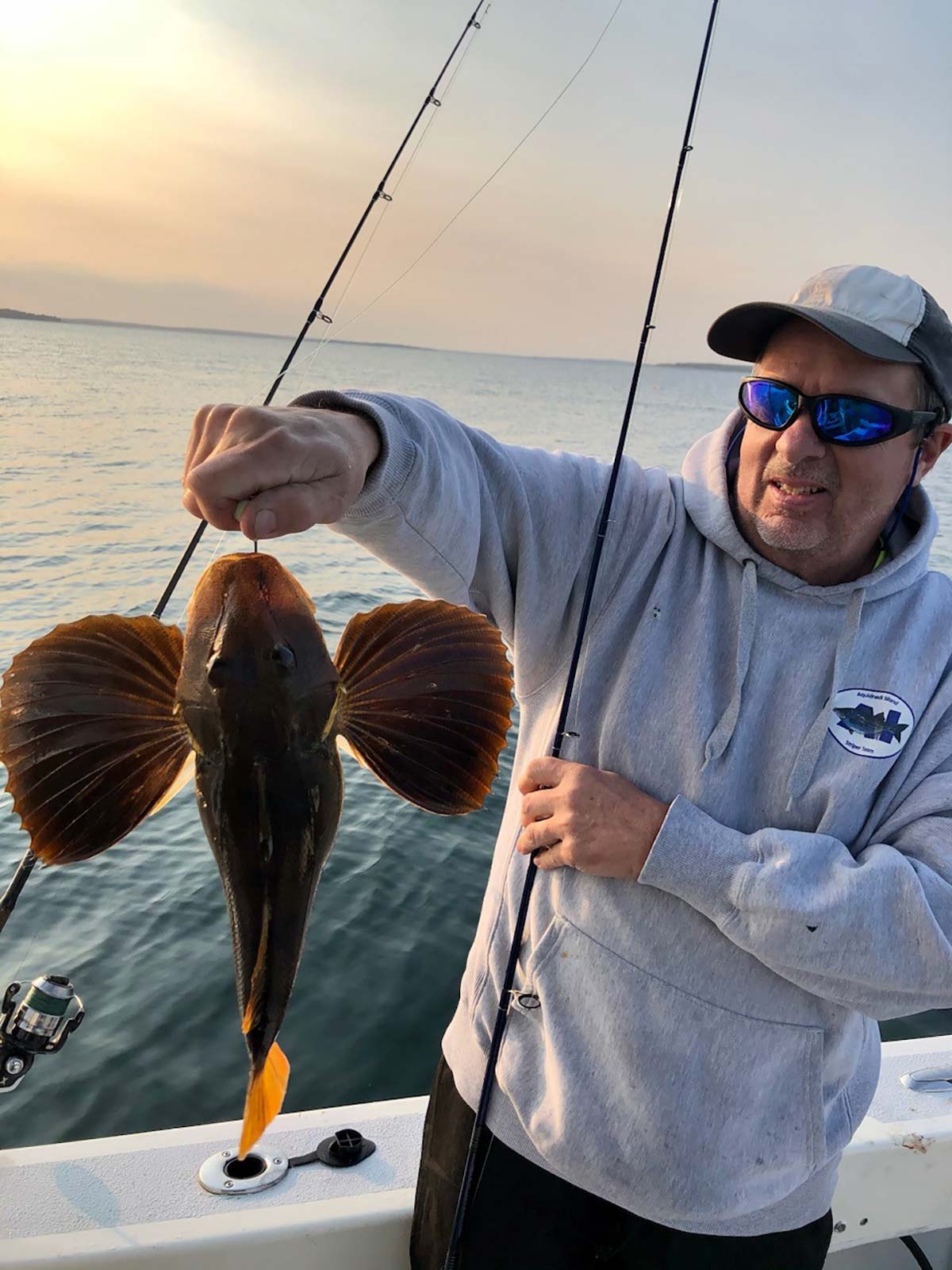
When harvesting a sea robin, some folks remove the head and then split the back half or you can fillet them, but a tip is to start at the tail of the fish and work forward on each side. The slightly grey meat will turn pure white when cooked and is fairly firm thus the preference in the soups and chowders.
Most Sea Robins are caught fluking but they absolutely love the small squid-like jigs like the Lucanus Jig, orange is a good color but they aren’t often picky. I have even caught some on topwater and swimming lures will also work, they are most definitely not shy about hitting a lure. Lure speed is most often the deciding factor as they are another slow mover.
Spots that produce sea robins are most often fluke areas but the east side of Rose Island and the east end of the Newport Bridge can give up some bombers. From shore, both Tiverton Stone Bridge and Rocky Point Park are hotspots for large sea robins.
Triggerfish
My other late-summer favorite is the triggerfish which seems to be around more and more each year. These guys fight like crazy and, if you skin them, they are pretty good on the plate as well. You can catch them randomly in the later summer when sea bass or porgy fishing but most often they are caught when targeting tog in the fall. Most any rock pile has a chance to hold a few but chumming with clams, crushed muscles or crabs really seems to bring them in. The bite stays good from August through mid-October. Triggers have relatively small mouths so use smaller hooks, once again ‘scup sized’ hooks are a good bet and nothing larger than 3/0. These fish have hard mouths and an almost ‘parrot like’ beak, so your hooks need to be sharp and even then, they can be challenging to hook. Once hooked they dig like a scup on steroids!
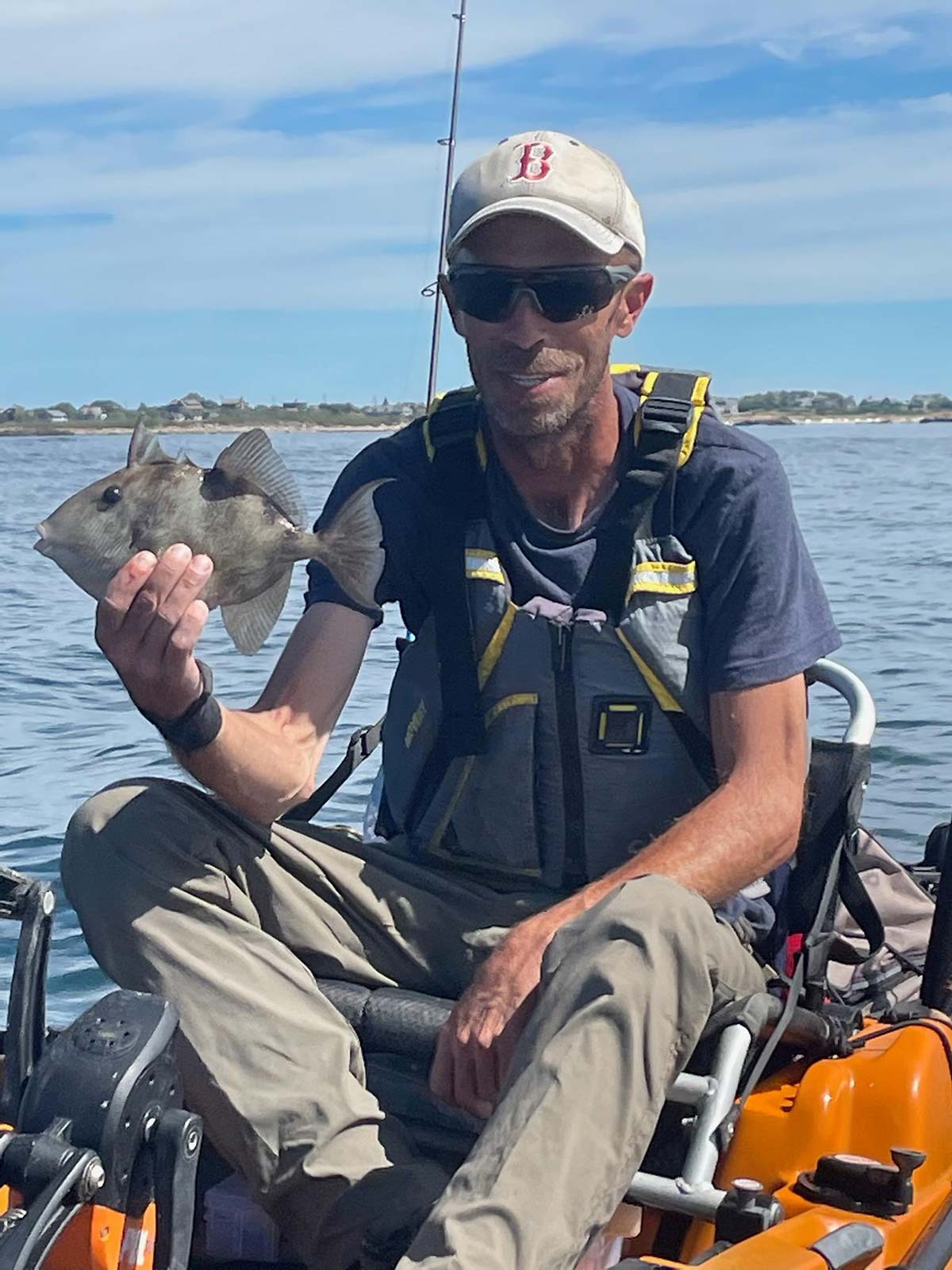
Good luck with these new species and next time you are out and the bottom fishing isn’t quite as good as you had hoped, consider expanding your horizons and target some of these less glorious species—they’re fun to catch and many of them make for an excellent meal at the end of the day.

